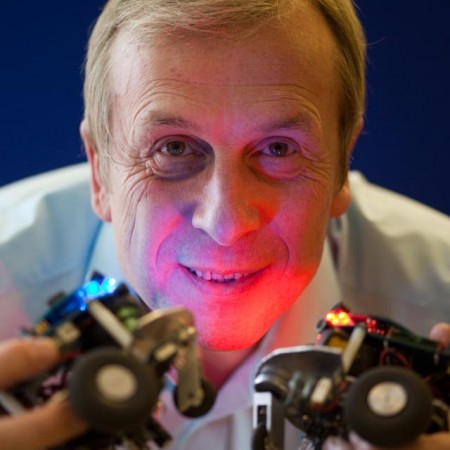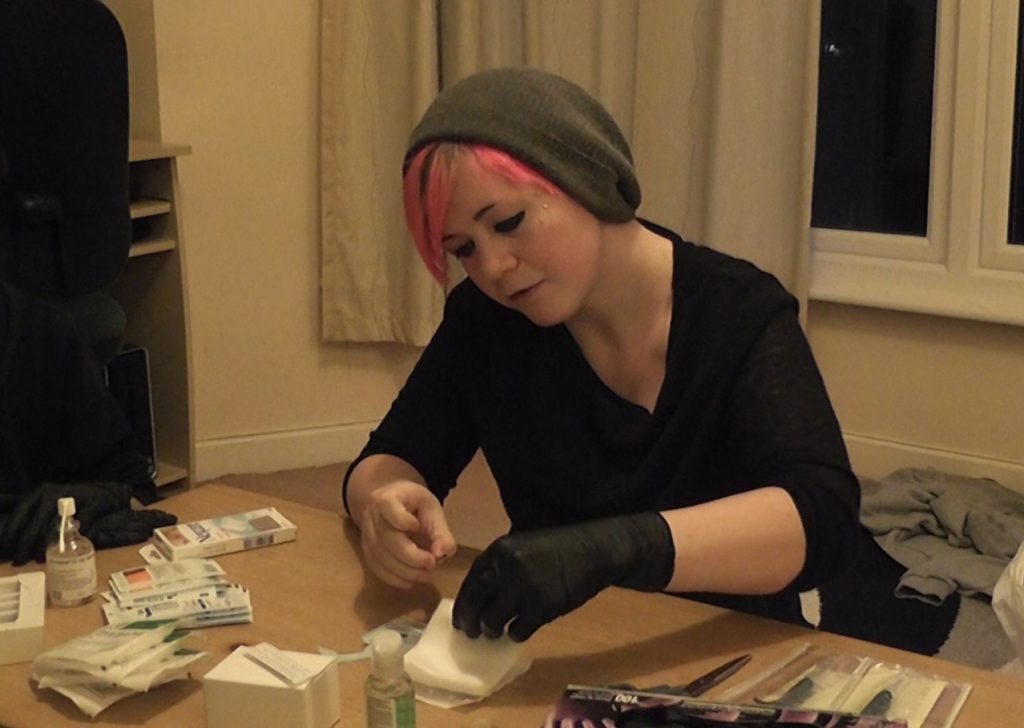Please note: The event discussed below was part of Manchester Science Festival 2018. To find out what exhibitions and activities are open today, visit our What’s On section.
It’s the perfect mix of ordinary and otherworldly that has grabbed our attention, and we can’t wait to meet some biohackers in the flesh (and microchip) at the festival. Until then, read on for a short introduction to the world of transhumanism.

WHAT IS TRANSHUMANISM?
Transhumanism is a social and philosophical movement dedicated to the research and development of human enhancement technologies. Transhumanists believe that the human race can evolve beyond our current physical and mental limitations by means of technology.
The movement is divided between adherents of two visions of post-humanity—one in which technological and genetic improvements have created a species of radically enhanced humans, and the other in which greater-than-human machine intelligence emerges.
We’ve touched on greater-than-human machine intelligence on the blog before but the idea of upgrading ourselves as a species is a fairly new concept, and not something that’s yet in the mainstream. Humans 2.0, if you will.
IS IT THOUGH? PROSTHETICS AND PACEMAKERS HAVE BEEN AROUND FOR AGES…
Good point. This is actually known as bioengineering, and is basically where biology meets engineering for medical purposes. Technically, these don’t come under the transhuman banner as they are devices that have been designed to fulfil a medical need e.g. to replace a lost limb, or to regulate a heartbeat.
The advances that have been made in this field over the last few decades have been significant. At the You Have Been Upgraded event this week, you’ll get the chance to meet Tilly Lockey and James Young, both of whom have benefited from bioengineering.
Who’s Tilly Lockey?
Tilly Lockey is not your average 13 year-old. Ok, so she does all the usual 13 year-old stuff like going to school and hanging out with her mates, but she’s also chatted with the Dalai Lama about compassion and technology and is a Bionic Hero for pioneering UK company, Open Bionics.

After losing both of her hands to meningococcal septicaemia strain B aged 15 months, Tilly had various prosthetic limbs before being fitted with a pair of Hero Arms in 2017.
Hero Arms are a truly amazing bit of kit. Developed by Bristol-based Open Bionics, Hero Arms aim to ‘turn disabilities into superpowers’. They are 3D printed, custom-built multi-grip arms. They make no attempt to hide the fact that they’re bionic arms (goodbye, weird pink/orange toned pseudo-flesh) and instead riff on their cyber-cool design. They even have swappable covers to match your mood.
Special sensors within the Hero Arm detect muscle movements, meaning wearers can control their arm with life-like precision and they can also lift objects up to 8kg. Tilly will be at You Have Been Upgraded and you’ll be able to chat to her about becoming a Bionic Hero.
And the biohackers?
One of the earliest biohackers is Captain Cyborg, or Kevin Warwick as he’s also known.

Kevin? That’s not a very cyborg-y name…
Don’t let the name fool you: Kevin is one seriously cool dude. He’s an engineer and deputy Vice Chancellor (Research) at the University of Coventry. Prior that he was Professor of Cybernetics at The University of Reading.
Kevin’s an expert in artificial intelligence, bioengineering and robotics, but he’s probably best know for having multiple implants in his arm to ‘become a cyborg.’
The first implant was put in in 1998, making him a pioneer in the field. The chip opened doors for him and switched lights on in his lab—handy! Also remember this is in 1998, when most of us thought Tamagotchi were the height of technological sophistication. So it’s pretty cool.
Kevin then had a second implant in 2002 which was much more sophisticated than the original RFID chip. This implant had an array of electrodes that implanted directly into Kevin’s nervous system. The signal from this was detailed enough that a robot arm developed by his colleague Professor Peter Kyberd was able to mimic the actions of Kevin’s arm.
The implant also allowed his nervous system to connect to the internet in Columbia University, New York. From there he was able to control the robot arm and to obtain feedback from sensors in the finger tips. He also successfully connected ultrasonic sensors on a baseball cap and experienced a form of extra sensory input.
Kevin’s had his hand monitored by researchers, as there was initial concern that interfacing with his nervous system might have caused some damage. Instead, nerve tissue has actually grown around the electrode array and has enclosed the sensor in his body.
Here’s Kevin giving a recent TedX talk about his experiences of being a cyborg:
Do all biohackers work with research labs?
Not at all. There’s a significant number of biohackers who are out there doing this stuff in their kitchens, literally. Known as ‘grinders,’ one of the movements more well known advocates is Lepht Anonym.

Lepht works with low budgets and items you can buy quite easily in order to achieve sensory extension via haptic implants (haptic meaning relating to or based on the sense of touch). Lepht’s goal is to create functional, sub-dermal electronics, and Lepht does a lot of self experimentation.
So far, Lepht’s implants have included RFID chips to interface with electronic devices, to magnetic implants that detect electromagnetic waves. Various devices give off electromagnetic radiation, and the implants allow Lepht to experience the electromagnetic radiation as a tingling sensation, giving them a whole new sensory experience.
Lepht initially got involved with transhumanism at university, whilst studying for a Computer Science degree. Lepht realised that whilst a lot of people were interested in the theory of transhumanism, there wasn’t much practical stuff going on so they decided to start experimenting with biohacking. Lepht does this to improve their knowledge, and share that knowledge so that other people can biohack more safely and effectively.
Does it hurt?
Because of British medical legislation, Lepth cannot access any anaesthetics and a doctor will not perform the surgeries as they aren’t for medical purposes. So, all implants are done at home without anaesthetic. Eek. There have been many successes for Lepht but also some trial and error. You can watch more below, although there are some graphic surgical scenes in here so if you’re squeamish – don’t click!
Won’t these implants just be used by companies to spy on us?
Well, theoretically yes, they could be used for that purpose, but you could argue that the amount of data we feed to Google, Apple, Microsoft and Facebook on an almost minute-by-minute basis has kind of done this already. Part of the ethos of the biohacker movement is that by individuals experimenting in this way they themselves have control over the devices in a way that they wouldn’t do if Google or Apple had developed them.
I studied genetics and biochemistry years ago at Cambridge uni.The bio hacking and grinders are at stratospheric level and that’s totally awesome.Defitetly want to become s biohacker. In want to use crispr on myself and give myself beyond human iq and physical strength.I will turn into real life superhero doing superhero secret missions.